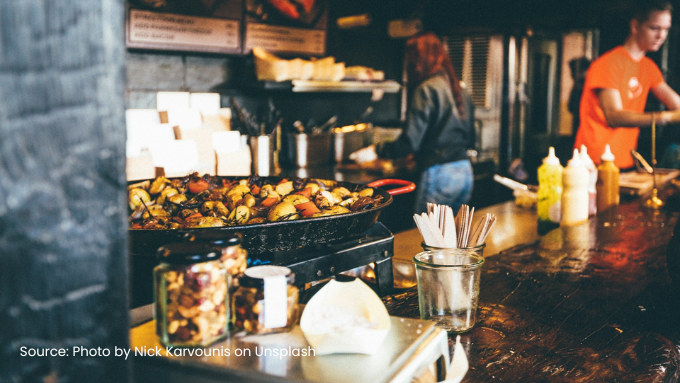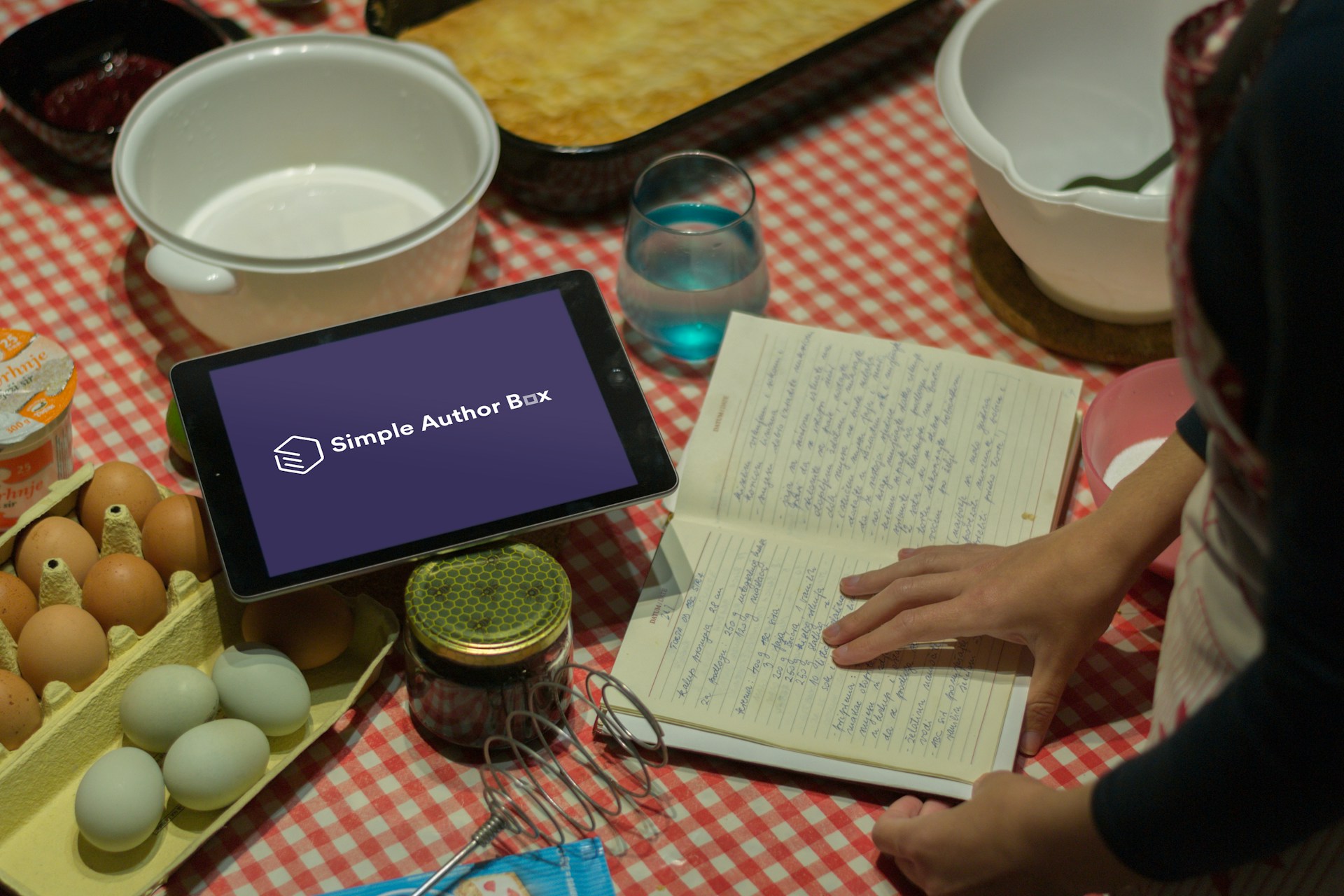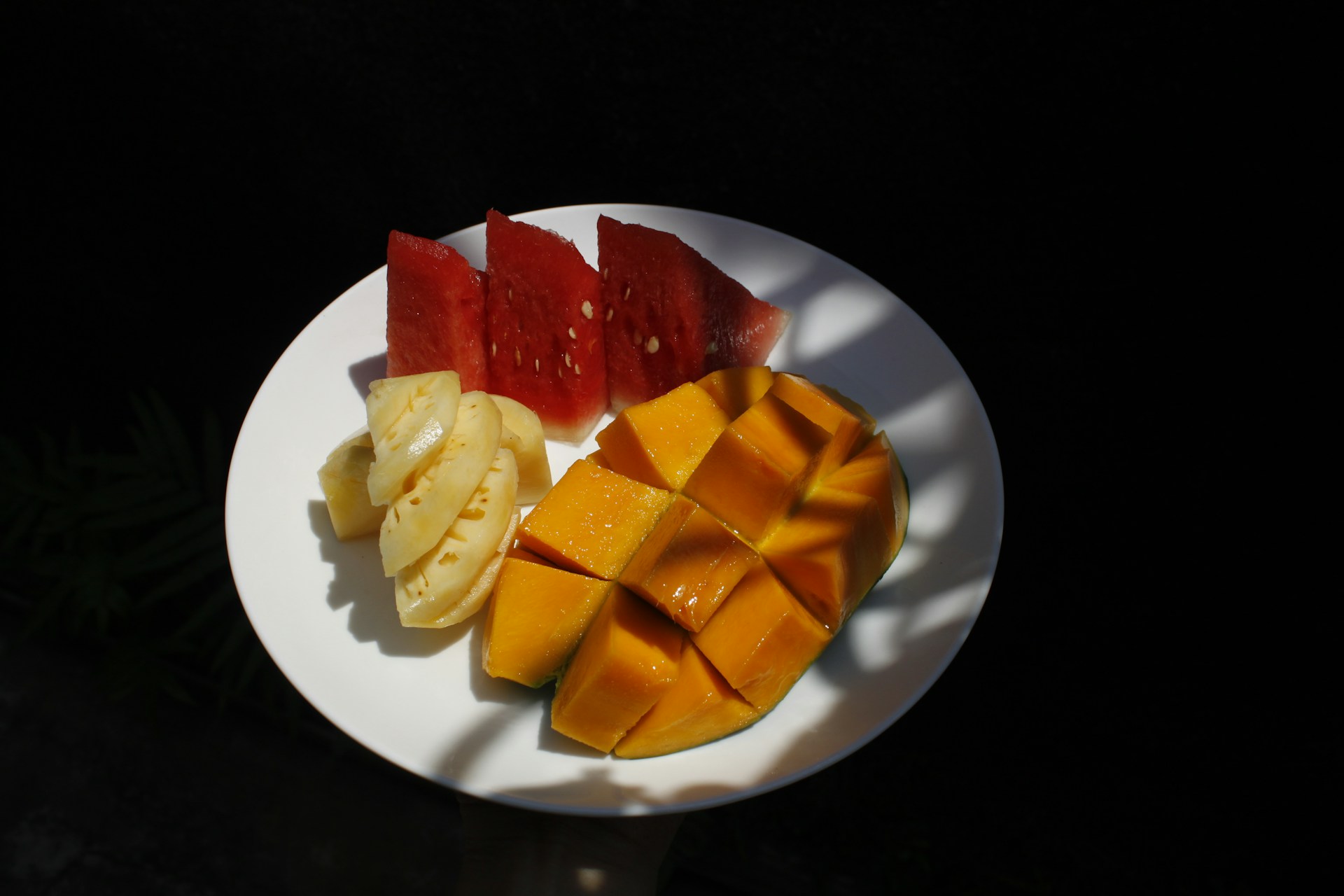Analysis of Factors of the Use of Food Additives in the Elementary School
Analisis Faktor-faktor dalam Penggunaan Bahan Tambahan Pangan di Sekolah Dasar

Downloads
Background: Merchants sell a variety of food for schoolchildren. In an attempt to make the food they offer more enticing and long-lasting, dealers frequently add food additives, sometimes prohibited food additives which is against the law. Predisposing conditions affect the addition of additives to snacks.
Objectives: The study aimed to determine the factors that influence the addition of food ingredients not allowed by snack vendors in snacks sold around elementary schools
Methods: This study used a survey approach with a cross-sectional design. The 99 traders that made up the study's sample were chosen randomly. The use of food additives was the dependent variable and the independent variables were gender, education, knowledge, age, and length of selling. Test kits were used in laboratories to analyze snack samples sold by traders in order to identify food additives (formalin, borax, Rhodamine B, and Yellow Methanol). Multivariate, bivariate, and univariate analysis were used in the research process. The multiple logistic regression with 95% Confident Interval and chi-square statistical tests were employed in this investigation.
Results: The number of snacks checked by test-kit with the result was 21.2% of snacks containing prohibited food additives with a good level of knowledge on the sword as much as 52.5%. The results of the chi-square test statistics for knowledge (p=0.001), age (p=0.010), length of sale (p=0.022) was related to the use of prohibited food additives. The results of multivariate analysis showed that knowledge was the most influential factor in the use of food additives.
Conclusions: Traders' knowledge about the use of food additives was the main factor, besides that relate factors were age and length of selling.
. Kemdikbud. Permendikbudristek Nomor 13 Tahun 2022 tentang Perubahan atas Peraturan Menteri Pendidikan dan Kebudayaan Nomor 22 Tahun 2020 Tentang Rencana Strategis Kementerian Pendidikan dan Kebudayaan Tahun 2020-2024. Kemdikbud 1–249 (2022).
Kemenkes. Kepmenkes RI No 942/MENKES/SK/VII/2003 Tentang Pedoman Persyaratan Hygiene Sanitasi Makanan Jajanan Vol. 18, 22–27 (2003).
Supriyatno. Gizi Seimbang dan Kantin/Jajanan Sehat di Sekolah Dasar. 1–24 (2021).
Peraturan Pemerintah RI. Peraturan Pemerintah Republik Indonesia tentang Keamanan, Mutu dan Gizi Pangan. Peratur. Pemerintah RI 1–22 (2004).
Cahyadi, I. W. Analisis & aspek kesehatan bahan tambahan pangan. (Bumi Aksara, 2023).
Mambang. Pengetahuan, definisi, jenis dan faktor. (2020).
Wulandari, W. Gambaran Pengetahuan Pedagang Dalam Penggunaan Formalin Pada Ikan Asin Di Pasar Tradisional Kedungprahu. PREPOTIF J. Kesehat. Masy. 6, 1341–1345 (2022).
Kemenkes. Peraturan Menteri Kesehatan Republik Indonesia Nomor 033 Tahun 2012 Tentang Bahan Tambahan Pangan. 66, 37–39 (2012).
Sari, N. P. Penggunaan Bahan Tambahan Pangan Berbahaya (Boraks) Pada Bakso Tusuk Yang Dijual Di Sekolah Dasar Kecamatan Salo Kabupaten Kampar. Avicenna J. Ilm. 15, 84–94 (2020).
Miao, P., Chen, S., Li, J. & Xie, X. Decreasing consumers’ risk perception of food additives by knowledge enhancement in China. Food Qual. Prefer. 79, 103781 (2020).
Azis, A. & Fauziah Noer, S. Dampak Negatif Bahan Tambahan Pangan Bagi Kesehatan Dan Pencegahannya. J. Train. Community Serv. Adpertisi 3, 61–64 (2023).
Setyawati, U. G. & Mahmudiono, T. Media Gizi Indonesia. Media Gizi Indones. (National Nutr. Journal) Vol. 18, 56–62 (2023).
Mahmuda, A. N. & Kurnia, S. T. P. P. Hubungan Pengetahuan Dan Perilaku Mahasiswa Kos Mengenai Keamanan Makanan Jajanan Di Sekitar Kampus Universitas. (2021).
Dardi, S. & Kelen, F. L. Perawat Dengan Penerapan Protokol Kesehatan Covid-19. Hub. Tingkat Pengetah. Dan Pengalaman Kerja Perawat Dengan Penerapan Protok. Kesehat. Covid-19 17, 27–31 (2022).
Wahyono, B. Analisis Faktor-Faktor Yang Mempengaruhi Pendapatan Pedagang di Pasar Bantul Kabupaten Bantul. J. Pendidik. Ekon. 6, 388–399 (2017).
Sadono, S. Mikro Ekonomi Teori Pengantar edisi ketiga. (PT. Rajagrafindo Persada, 2016).
Fitriani, N. L. & Andriyani, S. Hubungan Antara Pengetahuan Dengan Sikap Anak Usia Sekolah Akhir (10-12 Tahun) Tentang Makanan Jajanan Di Sd Negeri Ii Tagog Apu Padalarang Kabupaten Bandung Barat Tahun 2015. J. Pendidik. Keperawatan Indones. 1, 7 (2015).
B. S., I. N. et al. Hubungan Usia Dengan Pengetahuan Dan Perilaku Penggunaan Suplemen Pada Mahasiswa Institut Teknologi Sepuluh Nopember. J. Farm. Komunitas 7, 1 (2020).
Sarwoko, S. & Sartika, M. Faktor-Faktor yang Berhubungan dengan Penggunaan Bahan Tambahan Pangan (BTP) Boraks Pada Makanan Yang Dijual di Taman Kota Baturaja. Cendekia Med. 3, 53–62 (2018).
Aulia, S. H. Faktor-Faktor yang Berhubungan dengan Penggunaan Bahan Tambahan Pangan Pewarna (RHODAMIN B) pada Pangan Jajanan Anak Sekolah di Wilayah Kerja Puskesmas Pekayon Jaya Kota Bekasi Tahun 2020. (Poltekkes Kemenkes Jakarta II, 2020).
The United Nations, F. and A. of. General Standard For Food Additives (CXS 192-1995). (2017).
Martins, F. C. O. L., Franco, D. L., Muñoz, R. A. A. & De Souza, D. Organic and Inorganic Compounds Containing Selenium: Analytical Methods Review and Chemical Analysis Perspectives. Quim. Nova 40, 1204–1214 (2017).
Saltmarsh, M. & Insall, L. Food Additives and Why They Are Used. Essent. Guid. to Food Addit. 1–13 (2013) doi:10.1039/9781849734981-00001.
BPOM. Formalin: Larutan Formaldehid. (2008).
Nurkhamidah, S. Identifikasi Kandungan Boraks Dan Formalin Pada Makanan Dengan Menggunakan Scientific Vs Simple Methods. Sewagati 1, 26 (2017).
Melani MS, E. & Nur Afiah Putri Nandika, N. Uji Kualitatif Kandungan Boraks Pada Makanan Bakso Yang Beredar Di Pasar Cijerah Kota Bandung. INFOKES (Informasi Kesehatan) 5, 39–51 (2021).
Nguyen, L. H. et al. Improving Fenton-like oxidation of Rhodamin B using a new catalyst based on magnetic/iron-containing waste slag composite. Environ. Technol. Innov. 23, 101582 (2021).
Tatebe, C. et al. A simple and rapid chromatographic method to determine unauthorized basic colorants (rhodamine B, auramine O, and pararosaniline) in processed foods. Food Sci. Nutr. 2, 547–556 (2014).
Cheng, Y. Y. & Tsai, T. H. A validated LC-MS/MS determination method for the illegal food additive rhodamine B: Applications of a pharmacokinetic study in rats. J. Pharm. Biomed. Anal. 125, 394–399 (2016).
Sari, A. N., Rizkina, A. W., Syah, F. A. & Sabilla, F. Identifikasi methanyl yellow pada jajanan yang beredar di Kota Banda Aceh 11 Sari. Amina 5, 11–15 (2023).
BPOM. Bahaya Methanyl Yellow Pada Pangan. J. info POM 14, (2016).
Merck. Metanil yellow Reag . Ph Eur. (2017).
Yudha, A. A. Pengaruh Pemberian Methanyl Yellow Peroral Dosis Bertingkat Selama 30 Hari Terhadap Gambaran Histopatologi Duodenum Mencit Balb/c. (Universitas Diponegoro, 2014).
Copyright (c) 2024 Amerta Nutrition

This work is licensed under a Creative Commons Attribution-ShareAlike 4.0 International License.
AMERTA NUTR by Unair is licensed under a Creative Commons Attribution-ShareAlike 4.0 International License.
1. The journal allows the author to hold the copyright of the article without restrictions.
2. The journal allows the author(s) to retain publishing rights without restrictions
3. The legal formal aspect of journal publication accessibility refers to Creative Commons Attribution Share-Alike (CC BY-SA).
4. The Creative Commons Attribution Share-Alike (CC BY-SA) license allows re-distribution and re-use of a licensed work on the conditions that the creator is appropriately credited and that any derivative work is made available under "the same, similar or a compatible license”. Other than the conditions mentioned above, the editorial board is not responsible for copyright violation.












































